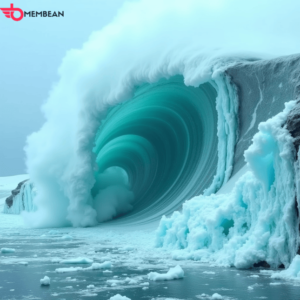Introduction
The greenland tsunami wave is a natural disaster that can have serious consequences. These waves can be caused by various factors, including landslides, volcanic eruptions, or earthquakes. Understanding the greenland tsunami wave is essential for those living in coastal areas and for scientists studying these events. This article will provide an overview of the causes, effects, and safety measures related to the.
What is a Tsunami?
A tsunami is a series of ocean waves with very long wavelengths. They are usually caused by large disturbances in or near a body of water. These disturbances can include:
- Underwater earthquakes
- Landslides
- Volcanic eruptions
- Meteorite impacts
The Greenland tsunami wave is one such event that has garnered attention due to its unique characteristics.
Causes of Greenland Tsunami Wave
Underwater Earthquakes
Underwater earthquakes are the most common cause of tsunami waves. When an earthquake occurs, it can displace a large volume of water, creating powerful waves. The Greenland tsunami wave can originate from seismic activity in the region.
Landslides
Landslides are another significant cause of tsunamis. In Greenland, large icebergs can break off from glaciers and fall into the sea. This sudden displacement of water can trigger a Greenland tsunami wave.
Volcanic Eruptions
Volcanic eruptions can also generate tsunami waves. The explosion can displace water and create waves that travel across the ocean. In Greenland, volcanic activity can lead to the formation of a Greenland tsunami wave.
How Do Tsunami Waves Form?
Wave Generation
When a disturbance occurs, waves begin to form. The size and energy of these waves depend on the strength of the disturbance. A larger displacement will create a larger wave. The Greenland tsunami wave can be particularly powerful due to the geological features of the region.
Wave Propagation
Once generated, tsunami waves travel across the ocean at high speeds. In deep water, they can reach speeds of up to 500-800 km/h (310-500 mph). As these waves approach shallow water near the coast, they slow down but increase in height. This is when the Greenland tsunami wave can become dangerous.
Impact of Greenland Tsunami Wave
Coastal Communities
Coastal communities are at the highest risk during a Greenland tsunami wave. When the waves reach land, they can cause severe flooding, destruction of infrastructure, and loss of life. Evacuating these areas before a tsunami strikes is crucial for safety.
Ecosystems
Tsunami waves can also have significant effects on local ecosystems. The powerful force of the waves can destroy habitats for marine life. The Greenland tsunami wave can disrupt the balance of local ecosystems, affecting both plants and animals.
Historical Instances of Greenland Tsunami Waves
The 2017 Nuugaatsiaq Tsunami
One notable instance of a Greenland tsunami wave occurred in 2017 when a landslide generated waves that struck the village of Nuugaatsiaq. The event caused significant damage and led to evacuations.
Other Recorded Events
Various historical records indicate other instances of tsunami waves in Greenland. These events highlight the importance of monitoring and studying these phenomena to ensure safety in the future.
Monitoring Tsunami Waves
Early Warning Systems
To protect coastal communities, early warning systems are essential. These systems monitor seismic activity and detect potential tsunami waves. In Greenland, scientists work to improve these systems to ensure timely warnings.
Research and Technology
Advancements in technology have improved our understanding of tsunami waves. Researchers study the geological features of Greenland to predict potential tsunami events better. The study of past Greenland tsunami wave incidents helps in developing strategies for mitigation and preparedness.
Safety Measures for Coastal Communities
Education and Preparedness
Community education is vital in preparing for a Greenland tsunami wave. People must understand the signs of a tsunami and the necessary evacuation procedures. Schools and local governments can conduct training sessions to ensure everyone is prepared.
Evacuation Routes
Establishing clear evacuation routes is crucial for safety during a tsunami event. Coastal communities should have marked paths leading to higher ground. Residents should be familiar with these routes to evacuate quickly if needed.
Emergency Kits
Having an emergency kit ready can save lives during a Greenland tsunami wave. This kit should include essentials such as food, water, first aid supplies, and important documents. Being prepared can make a difference in times of crisis.

FAQs about Greenland Tsunami Wave
What causes a Greenland tsunami_wave?
A Greenland tsunami_wave can be caused by underwater earthquakes, landslides, or volcanic eruptions.
How fast can a tsunami wave travel?
Tsunami waves can travel at speeds of 500-800 km/h (310-500 mph) in deep water.
What should I do if a tsunami warning is issued?
If a tsunami warning is issued, evacuate to higher ground immediately and follow local emergency instructions.
Can tsunamis affect marine life?
Yes, tsunamis can disrupt marine ecosystems, damaging habitats and affecting local wildlife.
How can communities prepare for a tsunami?
Communities can prepare by educating residents, establishing evacuation routes, and creating emergency kits.
Conclusion: Greenland tsunami wave
The Greenland tsunami_wave is a significant natural disaster that can impact coastal communities and ecosystems. Understanding the causes and effects of these waves is crucial for safety. With proper monitoring, education, and preparedness, communities can reduce the risks associated with tsunami events. By learning about the Greenland tsunami_wave, we can better protect ourselves and our environment.





